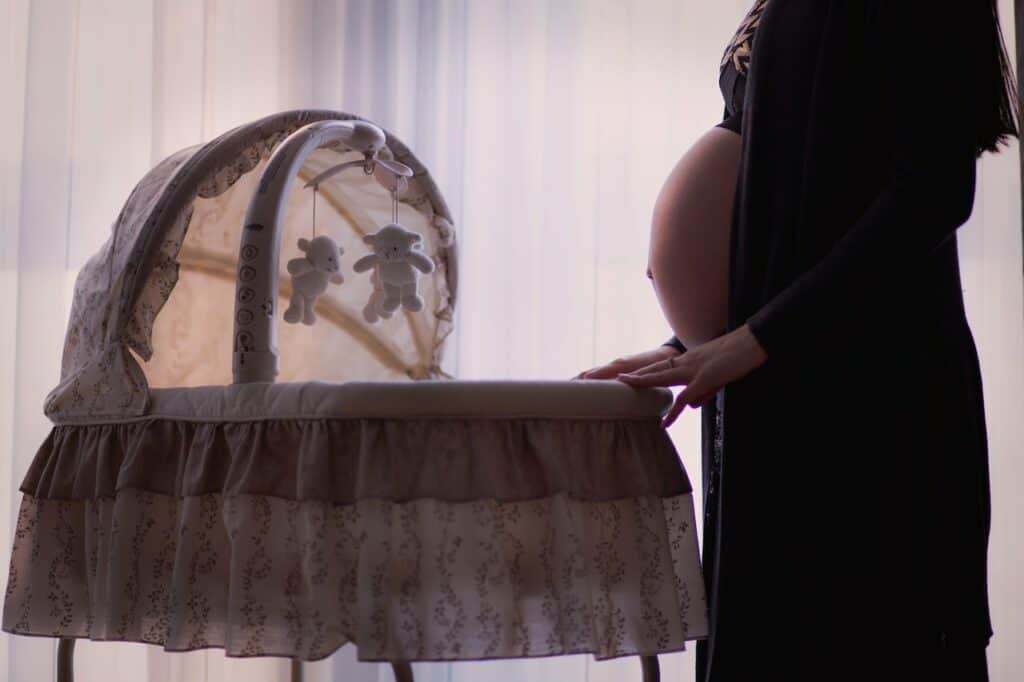Pregnancy is a time of excitement, anticipation, and a little bit of anxiety. As the due date approaches, many women start looking for ways to naturally induce labor. One popular method is taking a hot bath. But the question remains: will a hot bath induce labor at 37 weeks?
Understanding Labor Induction
Before diving into the effects of a hot bath on labor, it’s important to understand what labor induction is. Labor induction is the process of artificially stimulating uterine contractions to start labor. This can be done for various reasons, such as when the pregnancy has gone beyond the due date or if there are medical concerns for the mother or baby. However, inducing labor should only be done under medical supervision as it can have potential risks and complications.
Hot Baths and Labor
While there is no scientific evidence to suggest that a hot bath can induce labor, many women swear by this method. The theory behind this is that the warmth of the water can help relax the muscles, which may stimulate contractions. However, it’s important to note that taking a hot bath during pregnancy comes with some risks and precautions. For example, hot water can raise the mother’s body temperature, which can be dangerous for the baby. Additionally, prolonged exposure to hot water can cause dehydration, which can also lead to complications.
Key Takeaways
- Labor induction is the process of artificially stimulating uterine contractions to start labor.
- There is no scientific evidence to suggest that a hot bath can induce labor, but many women use this method.
- Taking a hot bath during pregnancy comes with risks and precautions, such as dehydration and raising body temperature.
Understanding Labor Induction
Labor induction is the process of artificially initiating labor in a pregnant woman before it starts naturally. This procedure is usually done when there are medical reasons to deliver the baby or when the pregnancy has gone past the due date.

There are various methods of inducing labor, which include the use of medications like oxytocin and prostaglandin. Oxytocin is a hormone that naturally occurs in the body and helps to stimulate contractions. Prostaglandin is a hormone that helps to ripen or soften the cervix, making it easier for the baby to pass through the birth canal.
Before inducing labor, the doctor will assess the woman’s cervix to determine if it is favorable for labor. A favorable cervix is one that is soft, thin, and dilated. If the cervix is not favorable, the doctor may use medications to ripen it before inducing labor.
It is important to note that inducing labor carries some risks, such as a higher chance of needing a cesarean delivery, fetal distress, and infection. Therefore, it is crucial that the decision to induce labor is made after careful consideration of the risks and benefits.
In conclusion, inducing labor is a medical procedure that should only be done when there are valid reasons to do so. The process involves the use of medications to stimulate contractions and ripen the cervix. It is essential to discuss the risks and benefits of labor induction with a healthcare provider before making a decision.
Hot Baths and Labor
Many pregnant women have heard the advice that taking a hot bath can induce labor at 37 weeks. However, there is limited scientific evidence to support this claim.
While taking a warm bath can help a woman relax and relieve stress, it is unlikely to cause labor to start. In fact, the American College of Obstetricians and Gynecologists recommends that pregnant women avoid hot tubs and saunas as they can raise body temperature to dangerous levels and potentially harm the developing fetus.
It is important to note that every woman’s body is different, and what works for one woman may not work for another. Some women may find that taking a warm bath or using a heating pad on their lower back can help alleviate discomfort during labor, but it is not a guaranteed method for inducing labor.
If a woman is considering using a hot bath to induce labor, it is important to discuss this with her healthcare provider first. They can provide guidance on safe water temperatures and advise on other methods for inducing labor if necessary.
Overall, while taking a warm bath may provide temporary relief during pregnancy, it is not a reliable method for inducing labor and should be used with caution.
Potential Risks and Precautions
While a hot bath may seem like a relaxing way to induce labor at 37 weeks, there are potential risks and precautions to consider before taking one.

Firstly, there is a risk of infection. Sitting in warm water for an extended period of time can increase the risk of developing a urinary tract infection or other infections. Pregnant women are already at a higher risk of developing infections, so it is important to take precautions to prevent them.
Secondly, stress can also be a concern. While a warm bath can be relaxing, it can also cause stress on the body if the water temperature is too high. This can lead to an increase in blood pressure and heart rate, which can be dangerous for both the mother and the baby.
Thirdly, there is a risk of birth defects if the water temperature is too high. Exposure to high temperatures during pregnancy has been linked to an increased risk of neural tube defects and other birth defects.
It is also important to monitor body temperature during a hot bath. A body temperature above 101°F can be harmful to the baby and may cause premature labor or other complications.
In addition, pregnant women with certain conditions should take extra precautions when taking a hot bath. Women with gestational diabetes, high blood pressure, or a history of miscarriage should consult with their healthcare provider before taking a hot bath.
Lastly, caution should be taken if there is a premature rupture of membranes or oligohydramnios. A hot bath can increase the risk of infection and may cause further complications.
Overall, while a hot bath may seem like a simple and relaxing way to induce labor, it is important to consider the potential risks and take necessary precautions to ensure the safety of both the mother and the baby.
Other Natural Ways to Induce Labor
In addition to taking a hot bath, there are other natural ways to induce labor that women may consider when they reach 37 weeks of pregnancy. These methods are not guaranteed to be effective, but some women have reported success in using them.

Nipple Stimulation
Nipple stimulation is a technique that involves gently rubbing or rolling the nipples to stimulate the release of oxytocin, a hormone that can help to induce labor. This method should be done for about 15 minutes at a time, three times a day, and can be repeated as often as desired.
Exercise
Exercise can help to increase blood flow to the uterus and cervix, which may help to induce labor. Walking, squatting, and pelvic tilts are all exercises that can be done to help prepare for labor.
Acupuncture
Acupuncture is a traditional Chinese medicine practice that involves the insertion of needles into specific points on the body. It is believed to help stimulate the release of hormones that can help to induce labor.
Intercourse
Intercourse can help to stimulate the cervix and release prostaglandins, which are hormones that can help to induce labor. It is important to note that intercourse should only be attempted if the woman’s water has not broken and there are no complications with the pregnancy.
Diet
Eating spicy foods or foods that are high in fiber can help to stimulate the digestive system and may help to induce labor. It is important to maintain a healthy and balanced diet throughout pregnancy.
Acupressure
Acupressure is similar to acupuncture, but instead of using needles, pressure is applied to specific points on the body. This technique is believed to help stimulate the release of hormones that can help to induce labor.
Other Methods
Other natural methods that may help to induce labor include using castor oil, having an orgasm, and using certain herbs or essential oils. It is important to speak with a healthcare provider before attempting any of these methods to ensure that they are safe and appropriate for the individual.
Medical Intervention and Advice
When it comes to inducing labor, medical intervention is always an option. However, it is important to note that inducing labor should only be done under the guidance of a healthcare provider. The American College of Obstetricians and Gynecologists (ACOG) recommends against elective induction of labor before 39 weeks of gestation, unless there is a medical indication to do so.

If a woman is approaching 37 weeks of gestation and is considering inducing labor, it is important to discuss this with her healthcare provider. The provider can evaluate the woman’s individual situation and determine if induction is a safe and appropriate option.
Some medical interventions that may be used to induce labor include:
- Membrane sweeping: This involves the healthcare provider using their finger to separate the amniotic sac from the cervix, which can release hormones that may help induce labor.
- Pitocin: This is a synthetic form of oxytocin, a hormone that helps stimulate contractions. Pitocin is administered through an IV and can help start and regulate contractions.
- Foley bulb: This involves inserting a small balloon into the cervix and filling it with saline solution. The pressure from the balloon can help ripen the cervix and start contractions.
It is important to note that medical interventions can come with risks and potential complications, such as uterine rupture or fetal distress. Women considering induction should discuss the risks and benefits with their healthcare provider.
In addition to medical interventions, there are also non-medical methods that may help induce labor, such as nipple stimulation or acupressure. However, it is important to discuss these methods with a healthcare provider before trying them.
Overall, when considering inducing labor at 37 weeks, it is important to seek guidance from a healthcare provider and weigh the potential risks and benefits of medical intervention.
Additional Considerations
When considering whether a hot bath can induce labor at 37 weeks, there are a few additional factors to keep in mind. While a warm bath can be a relaxing way to relieve pain and stress during pregnancy, there are some risks associated with hot baths and pregnancy that should be taken into account.

One important consideration is the risk of infection. Pregnant women are more susceptible to infections, and soaking in warm water for an extended period of time can increase the risk of developing a vaginal or urinary tract infection. It’s important to ensure that the bath is clean and to limit the amount of time spent soaking to reduce this risk.
Another factor to consider is the risk of preterm labor. While relaxation can help to ease the discomfort of pregnancy, it’s important to be aware that certain activities, such as taking a hot bath or using bath bombs, can trigger premature labor. Pregnant women should avoid elective induction or any activities that could lead to preterm labor, especially if they have a history of preterm birth or other risk factors.
It’s also important to note that there is no scientific evidence to support the idea that a hot bath can induce labor. While some women may find that a warm bath helps to stimulate uterine contractions, there is no guarantee that this will lead to labor. In fact, some studies have suggested that sexual intercourse may be more effective at inducing labor than taking a hot bath.
Finally, it’s important to involve family and healthcare providers in any decisions regarding labor induction. While a hot bath may seem like a harmless way to encourage labor, it’s important to consult with a healthcare provider to ensure that it’s safe for both the mother and baby. In some cases, healthcare providers may recommend other methods of inducing labor, such as having the membranes stripped or using medications, to reduce the risk of complications such as stillbirth.
Related post: Can a Pedicure Induce Labor
Frequently Asked Questions
Can warm baths help dilate?
There is no scientific evidence to support the claim that warm baths can help dilate the cervix. However, warm water can help relax the body and ease any discomfort during labor.
Can drinking warm water during labor help?
Staying hydrated during labor is important, but there is no evidence to suggest that drinking warm water specifically can help with labor progression.
Can taking a bath while pregnant in the third trimester be harmful?
It is generally safe to take a bath while pregnant in the third trimester. However, it is important to avoid hot water that can raise the body temperature, which can be harmful to the developing fetus.
How can I speed up my labor at 37 weeks?
It is not recommended to try to speed up labor at 37 weeks without medical supervision. Attempting to induce labor at home can be dangerous and may result in complications for both the mother and baby.
Can a hot bath delay labor?
There is no evidence to suggest that a hot bath can delay labor. However, it is important to avoid hot water that can raise the body temperature, which can be harmful to the developing fetus.
How can labor be induced at 37 weeks in the hospital?
Inducing labor at 37 weeks is typically only done for medical reasons, such as preeclampsia or other complications. The hospital staff will determine the best course of action based on the mother’s medical history and current condition.

Iesha is a loving mother of 2 beautiful children. She’s an active parent who enjoys indoor and outdoor adventures with her family. Her mission is to share practical and realistic parenting advice to help the parenting community becoming stronger.
